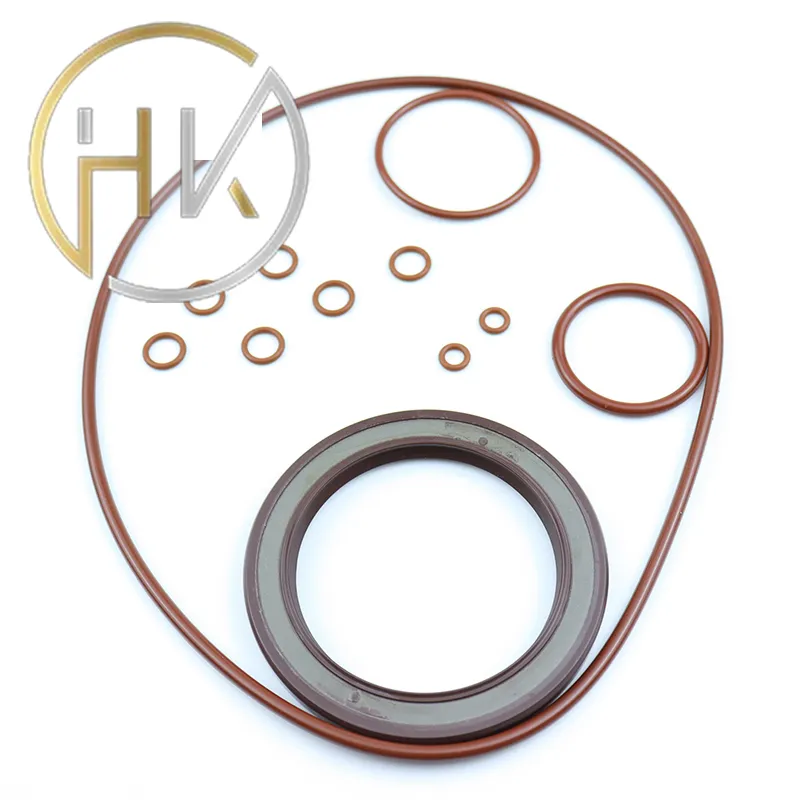डिसेंबर . 09, 2024 17:46 Back to list
Hydraulic Cylinder Repair Kits for Efficient Maintenance and Performance Enhancement
Understanding Hydraulic Cylinder Kits for Repair
Hydraulic cylinders are essential components in various machinery and equipment, serving as the driving force behind many industrial applications. When a hydraulic cylinder fails, it can lead to significant downtime and costly repairs. However, with the right knowledge and parts, many repairs can be tackled effectively with hydraulic cylinder kits. This article will explore the importance of hydraulic cylinders, the components of repair kits, and tips for successful repairs.
Importance of Hydraulic Cylinders
Hydraulic cylinders convert hydraulic energy into mechanical energy, providing the necessary force for lifting, pushing, or pulling tasks across various industries, including construction, manufacturing, and automotive sectors. They are commonly employed in equipment such as excavators, forklifts, and hydraulic presses. The efficiency and power they provide are unmatched—however, they are not immune to wear and tear. Common issues include leaks, rod damage, and seal failures. These problems can arise from extended use, contamination of hydraulic fluid, or lack of regular maintenance.
What Are Hydraulic Cylinder Kits?
Hydraulic cylinder repair kits contain all essential components required to restore a cylinder to optimal functionality. These kits typically include seals, O-rings, gaskets, wipers, and sometimes pistons. Depending on the manufacturer and model, the contents can vary, but the core components usually remain similar.
- Seals These are crucial for preventing hydraulic fluid from leaking out and contaminants from entering the cylinder. They come in various types, such as piston seals, rod seals, and scrape seals. Each type plays a vital role in maintaining pressure and ensuring smooth operation. - O-Rings and Gaskets These components create a tight seal between different sections of the hydraulic cylinder. O-rings are typically used in connections, while gaskets are more common in larger interfaces to prevent any fluid leakages.
- Wipers These components are responsible for scraping off any dirt or debris from the rod as it retracts, ensuring that contaminants do not enter the cylinder, which could cause damage.
Choosing the Right Repair Kit
When it comes to choosing the right hydraulic cylinder repair kit, several factors should be considered
1. Compatibility Always ensure that the repair kit is designed specifically for your hydraulic cylinder’s make and model. Manufacturer specifications are crucial for optimal repair.
hydraulic cylinder kits repair

2. Quality of Components Invest in high-quality kits, as inferior parts can lead to repeated failures. Look for kits produced by reputable manufacturers with a proven track record in hydraulic parts.
3. Repair Complexity Assess your skill level and the complexity of the repair. Some repairs may require professional assistance, while others can be handled as DIY projects.
Repairing a Hydraulic Cylinder
When approaching a hydraulic cylinder repair, follow these general steps
1. Disassemble the Cylinder Carefully remove the cylinder from the equipment. Drain the hydraulic fluid and take off any protective coverings.
2. Inspect Parts Once disassembled, inspect the internal parts for damage. Look for wear on the seals, scratches on the rod, and any signs of corrosion.
3. Replace Damaged Components Use the parts from your hydraulic cylinder repair kit to replace any damaged or worn components. Ensure that new seals are properly lubricated during installation to help with fitting and to extend their life.
4. Reassemble and Test After replacing the parts, reassemble the cylinder, refill it with hydraulic fluid, and conduct a test to check for leaks and proper operation.
5. Regular Maintenance To avoid future issues, establish a routine maintenance schedule. Regularly check fluid levels, inspect seals, and replace them as needed.
Conclusion
Hydraulic cylinder repair kits are invaluable tools that can save time and resources by allowing for efficient repairs. Understanding the components of these kits and how to use them can empower operators and maintenance personnel to keep essential machinery running smoothly. Remember, when it comes to hydraulic systems, proactive maintenance and timely repairs are key to preventing system failures and prolonging the life of your equipment.
-
Unlocking the Potential of Hydraulic Systems with Essential Sealing Solutions
NewsAug.06,2025
-
Unleash the Power of Your Hydraulic Systems with Our Premium Seal Kits
NewsAug.06,2025
-
Specialized Hydraulic Seal Kits for Breakers, Pistons, and Presses
NewsAug.06,2025
-
Revitalize Hydraulic Systems with Premium Repair and Seal Kits
NewsAug.06,2025
-
Fortify Your Cylinders with Premium Sealing Solutions
NewsAug.06,2025
-
Elevate Hydraulic System Reliability with Specialized Seal Kits
NewsAug.06,2025
-
TCN Oil Seal Metal Ring Reinforcement for Heavy Machinery
NewsJul.25,2025
Products categories
















